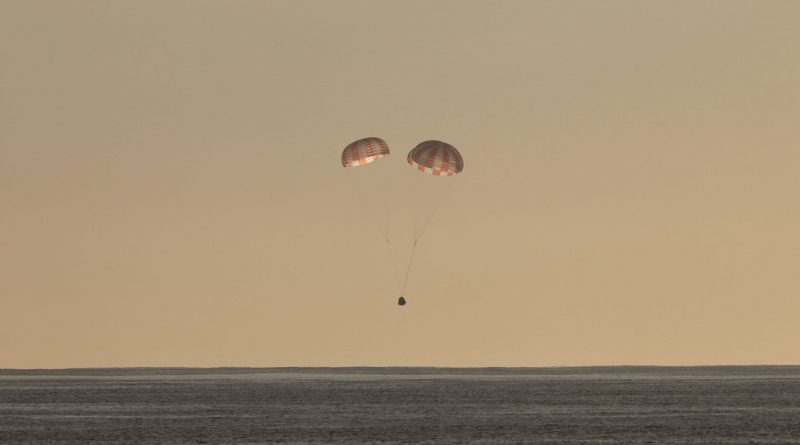Successful Dragon Splashdown concludes tenth SpaceX Visit to ISS
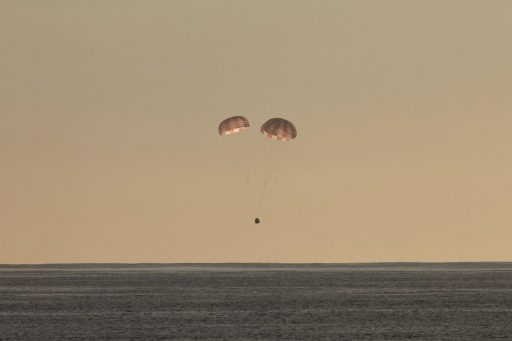
SpaceX’s Dragon spacecraft parachuted into the Pacific Ocean on Sunday, returning after a 28-day mission to the International Space Station, delivering critical supplies to the orbiting outpost and picking up precious samples and science equipment eagerly awaited in laboratories across the globe. The successful homecoming of Dragon marked the start of a race against time for the spacecraft to return to shore for time-critical samples to be shipped to their home institutions for post-flight analysis.
Dragon departed the International Space Station earlier on Sunday and spent five hours opening a gap to the orbiting complex before firing up its engines on a precisely calculated braking maneuver to drop itself out of orbit for re-entry en-route to a 14:46 UTC splashdown around 400 Kilometers due west of Baja California. Recovery forces standing by in the landing area reported Dragon made a bullseye splashdown and rushed in to recover the vehicle for return to the Port of Long Beach where time-critical cargo will be removed from the spacecraft.
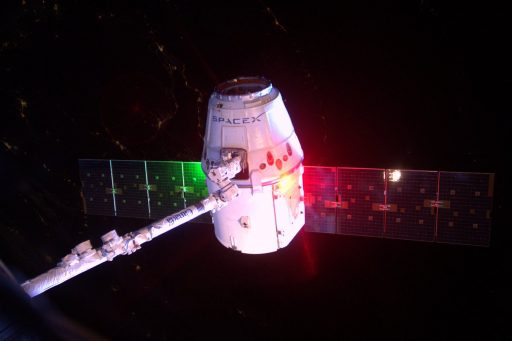
The tenth operational Dragon mission began with a February 19 liftoff atop SpaceX’s Falcon 9 rocket making its first launch from Launch Complex 39A at the Kennedy Space Center, reviving the storied Apollo and Space Shuttle launch pad after over five years of dormancy. Dragon fired up its own engines to maneuver into the Space Station’s 400-Kilometer orbit for rendezvous three days after launch, but was forced to make a detour when a parameter of its onboard software failed to match with expected predictions, pushing the rendezvous to February 23 to allow the craft to fly a wide lap around the Station and re-approach from behind and below.
Dragon took up residency at the Earth-facing port of the Harmony module of the Station and was opened for business within a few hours of its arrival by a very eager ISS crew to access time critical cargo items as well as a group of mice that had been huddled up inside the spacecraft for a six-day period.
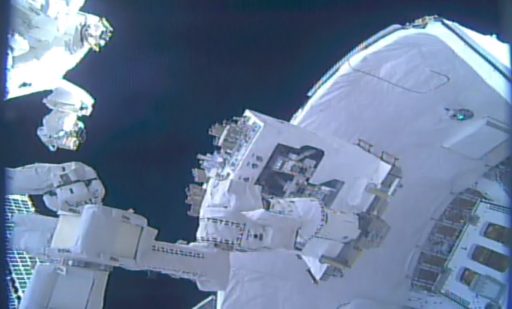
Dragon’s stay at ISS was highlighted by an extensive robotics effort to remove the SAGE-III atmospheric-sensing payload and the Space Test Program – Houston 5 experiment pallet from the spacecraft’s Trunk Section. For return, the Trunk was filled with three external payloads that have finished their tenure aboard ISS and were set for a fiery demise in Sunday’s return operation as Dragon’s trunk does not enjoy the luxury of a thermal protection system. Inside ISS, the crew was busy moving 1,530 Kilograms of cargo to the Station before loading Dragon with return items.
Dragon takes a special spot within the Station’s cargo fleet as the only cargo vehicle capable of returning items to Earth. Russia’s Soyuz can return a few dozen Kilograms of cargo alongside its three crew members, but only Dragon can ferry large cargo pieces to and from ISS including powered payloads. To that end, Dragon missions are always used to empty out the Station’s laboratory freezers which fill up with plenty of medical samples collected from the crew as well as other experiment samples such as environmental samples, plant parts and samples harvested from the brave mousetronauts that ride uphill aboard the Dragon without a return ticket.
>>SpX-10 Cargo & Science Overview
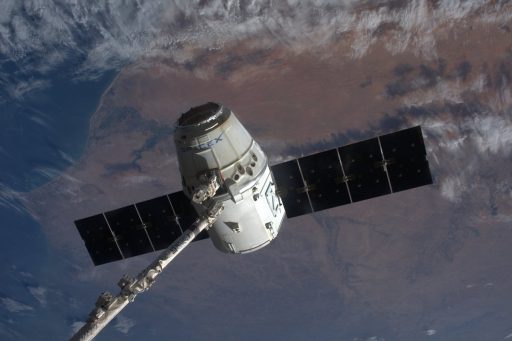
Twenty mice launched aboard the Dragon spacecraft to live aboard the Station for three weeks in a study of how bone tissue regeneration is affected by the microgravity environment and different treatment methods. This study is hoped to provide new insight into regenerative processes and why humans and other higher vertebrates are unable to re-grow lost bone and tissue to recover from severe injuries to the extremities. Also aboard the Dragon was an experiment studying the process of stem cell expansion that is critical in preparing the cells for application in medical treatments to fight cancer and a variety of other diseases. The spacecraft also returned cell cultures looking at gene mutation and a crystal growth experiment that examines protein crystal growth mechanisms in the absence of gravity.
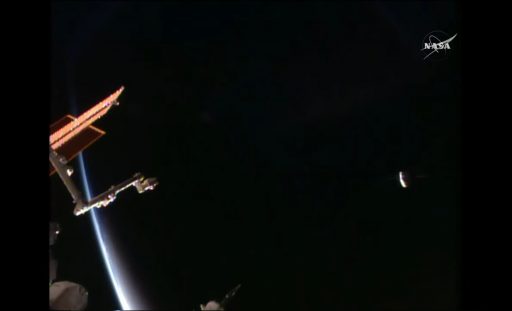
The Dragon was buttoned up on Saturday after the final cold stowage bags were loaded by the crew to set up for an overnight demating from the Harmony module ahead of departure in the early portion of the crew’s day on Sunday. Dragon was set free at 9:11 UTC and completed a pair of departure burns to initiate a downward opening rate to depart the ISS Keep Out Sphere prior to the third and largest departure maneuver to enable Dragon to pull out in front of ISS and open a gap for the deorbit burn. Dragon’s green-and-red navigation lights quickly receded into orbital night as the spacecraft rapidly departed the orbiting outpost to head off on five hours of free-flying.
Over the course of its three-orbit free flight, Dragon prepared for its homecoming by closing the GNC Bay Door to protect the navigation sensors used during the rendezvous with ISS from the harsh environment of re-entry.
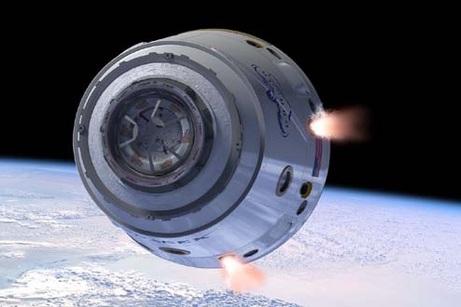
Dragon fired up on its deorbit burn at 13:55 UTC while flying over the Indian Ocean, burning a subset of its 400-Newton Draco thrusters for close to ten minutes to slow down by around 100 meters per second and enter a sub-orbital trajectory intercepting the atmosphere at a pre-determined point to enable Dragon to guide itself to the landing site. The spacecraft approached the landing zone from the north-west, targeting a stretch of ocean off the Californian coast with a landing corridor around 280 Kilometers in length.
The Trunk Section was jettisoned around 14:12 UTC, sending the solar arrays and aft cargo carrier to a fiery demise. Dragon itself hit the atmosphere ~14:25 UTC, having entered an orientation with the heat shield facing forward as temperatures increased to 1,600°C during re-entry. Throughout the Entry Phase, Dragon stabilized itself using the Draco thrusters, also controlling its lift to optimize the flight path toward the planned parachute opening target.
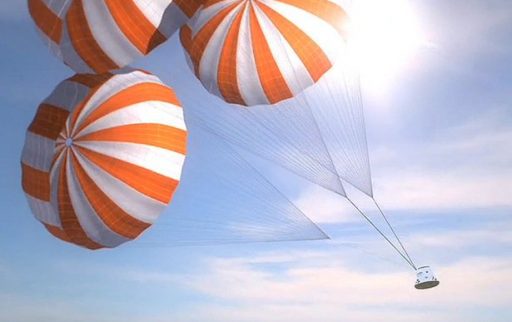
Slowing down in the dense atmosphere, Dragon reached a speed of 240 meters per second when the Drogue Parachutes were commanded to deploy at an altitude of 13.7 Kilometers. The three main chutes were released at an altitude of around three Kilometers, opening in an initial reefing stage before being fully opened to transition Dragon to a vertical descent and slow it down to 20 Kilometers per hour.
Splashdown – confirmed through SpaceX’s Twitter Feed – occurred at 14:46:22 UTC in the planned landing area some 400 Kilometers west of Baja California.
Immediately after Dragon had reached the water, fast boats were dispatched to the floating spacecraft to allow technicians to complete initial safing and hook Dragon up to a harness to lift the vehicle onto a cradle aboard the recovery ship for the return to land.
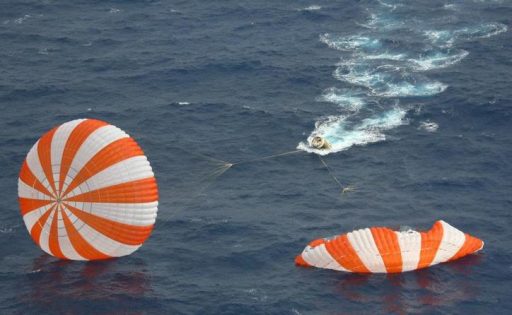
Dragon’s successful landing marks the beginning of a race against the clock as payloads returned in Double Cold Bags need to be delivered to their respective operators within 48 hours of landing – giving SpaceX around 25 to 26 hours to make the trip back to port. The time-critical samples and experiment materials will be flown back to Houston and other institutions as soon as they arrive on shore, using the Port of Long Beach to welcome the Dragon back on land.
The rest of Dragon’s cargo will be removed once the spacecraft is at SpaceX’s McGregor facility in Texas where post-flight decontamination will be completed before the Dragon enters storage for a potential future flight assignment.
For the International Space Station, a very busy period of operations lies ahead with the next cargo launch scheduled for as early as Thursday night. Pending an on-time liftoff of the Atlas V rocket from Cape Canaveral, the Cygnus OA-7 spacecraft SS John Glenn would be inbound for rendezvous after the weekend.
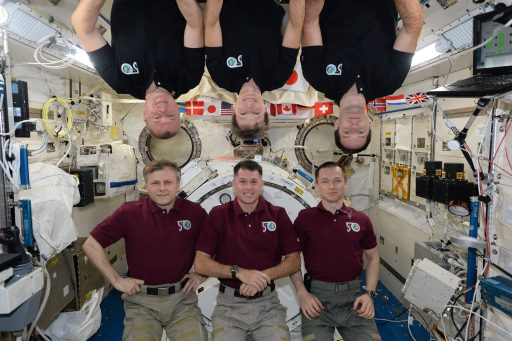
Per the current schedule, the first of three spacewalks coming up by the USOS crew is planned on Friday when Shane Kimbrough and Thomas Pesquet will venture outside the Station to complete outfitting of the Pressurized Mating Adapter 3 module for its upcoming relocation from Node 3 Port to Node 2 Zenith where it will serve as berthing port for upcoming commercial crew traffic.
PMA-3 would then be robotically relocated prior to a second EVA by Kimbrough and Peggy Whitson planned on April 2 to complete post-relocation outfitting of the PMA and replace an external computer box with a newer, more-capable model to support future visiting vehicle arrivals. Another EVA on April 7 by Whitson and Pesquet will tackle a series of tasks on the Station’s truss including the replacement of a power box, the installation of a camera assembly and a photographic survey of the AMS.
Kimbrough and his Russian Soyuz crew mates Rhyzhikov and Borisenko will then pack up to depart the Space Station on April 10 for a springtime landing in the Kazakh steppe. The next Soyuz with a two-man crew of Fyodor Yurchikhin and Jack Fischer is is currently aiming for launch on April 20 for a fast-track rendezvous with the Space Station.

